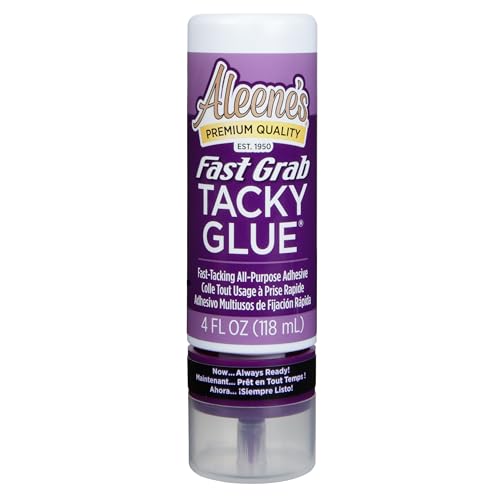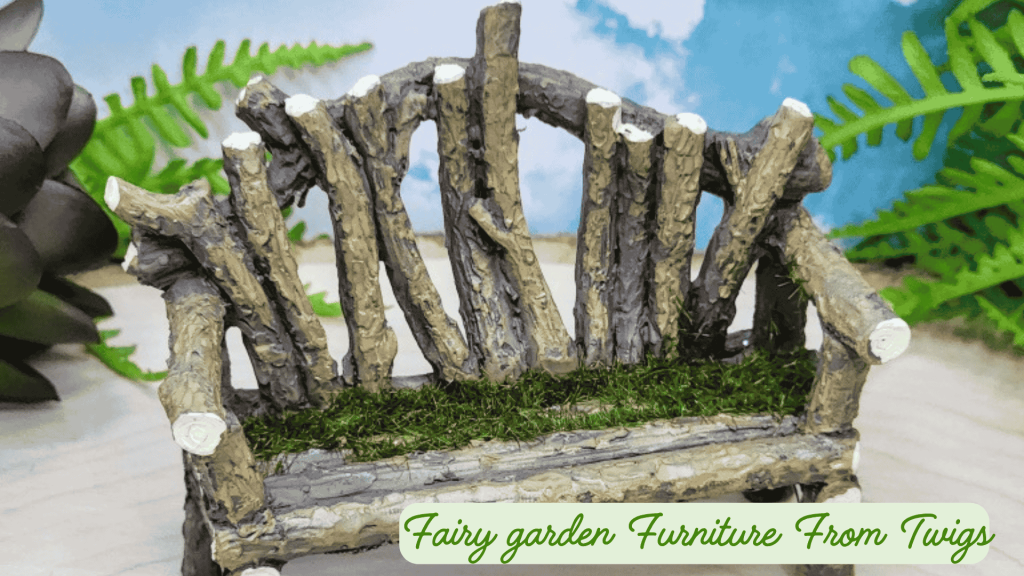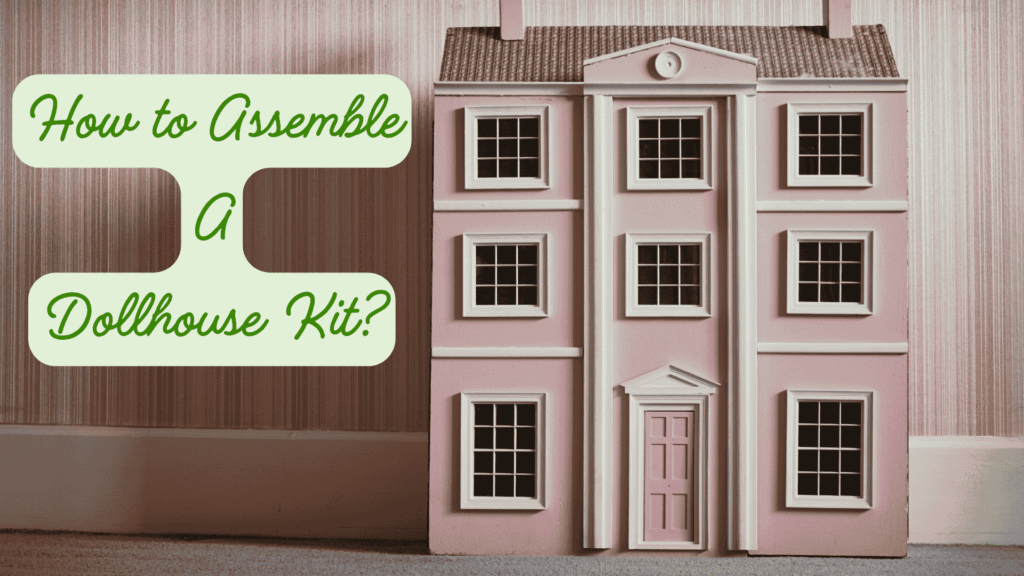Fairy gardens are magical, until your little bench collapses or your mushrooms melt in the rain. 😅 Whether you’re crafting a miniature garden for your shelf or one to live outside among the plants, the type of glue and sealer you use really matters.
I’ve tested a bunch of options over time, and here’s what’s actually worked (and what hasn’t) when it comes to holding your fairy creations together, rain or shine. (but still don’t leave them too long out in the rain though)
As an Amazon and Etsy associate, I earn a small commission from your purchase, with no extra charges for you.
Best Glues for Fairy Gardens
Let’s start with glue—because if it doesn’t hold, the rest doesn’t matter!
For Indoor Fairy Gardens:
This is my go-to for most indoor miniatures. It dries clear, grabs fast, and works well on porous materials like paper, fabric, and wood.

I’ve used it for DIY house kits, my treehouse (which includes fairy garden furniture), and so much more!
Pros:
- Dries clear
- Easy to control
- Great for delicate materials
Cons:
- Not waterproof
- Takes longer to dry than hot glue
TIP: purchase the one that stands on its top, upside down. This way, your glue is always ready to be used!

Aleene’s 33141 Glue, 4 FL OZ, Always Ready
Buy Now →
Check out my video below where I explain how I made all the furniture in a fairy garden style. For most of these, I used Grab Fast Tacky glue!
Great for quick builds, but not always the cleanest look. Works well for sticking larger items like fairy doors or pebbles.
Pros:
- Instant bond
- Good for heavier items
Cons:
- Can be stringy and messy
- Not for small, detailed work
BEWARE: I sometimes do use a hot glue gun in my YouTube videos, because of the instant bond, which is great to create video tutorials faster, but in general, I would not use a glue gun for other miniatures than fairy garden things!

SHJADE Mini Hot Glue Gun with 30 Glue Sticks
Buy Now →For Outdoor Fairy Gardens:
1. E6000
This is an industrial-strength glue that’s my top pick for outdoor fairy builds. It’s weatherproof, flexible when dry, and holds up through rain and sun.
Pros:
- Waterproof
- Long-lasting hold
- Good for mixed materials (wood to stone, plastic to metal, etc.)
Cons:
- Strong smell—use in a ventilated area
- Takes hours to fully cure

E6000 237032 Craft Adhesive with precision tip
Buy Now →TIP! E6000 vs. B6000 – What’s the Difference?
Both E6000 and B6000 are industrial-strength adhesives used in crafting, but there are slight differences. E6000 is thicker, slightly stronger, and better for heavier-duty outdoor use—it’s what I reach for when I need maximum hold in rain or sun. B6000 is a bit runnier, with a more precision-friendly nozzle, which makes it great for smaller, delicate items or fine detail work. Both are waterproof, flexible when dry, and strong enough for fairy garden builds.
2. Silicone Glue or Marine Adhesive
Also weatherproof and flexible, especially useful for gluing on uneven surfaces like bark or rough rock.
Pros:
- Stays flexible outdoors
- Bonds to tricky textures
Cons:
- Slower to cure
- Sometimes bulky or hard to control

Silicone Glue, 20g Clear Super Glue for Silicone Repair
Buy Now →TIP: To create my first fairy house, I used half of a plastic bucket and glued flat stones on it with a large silicone glue gun, which you would normally use in your household. It is still as solid as ever after all these years!
Check it out in this old video of mine! 🙂
Best Sealers for Fairy Garden Accessories
Sealers help protect your handmade fairy garden items from moisture, sun damage, and cracking. Not everything needs sealing, but here’s when and how I use it:
For Outdoor Use:
A water-resistant version of the classic sealer. Works well on painted items, clay, and even paper if applied carefully.
There are so many different kinds of Mod Podge on the market these days: for fabric or puzzles, for example, but what we need is basically one of the three most used: gloss, matte, and satin.
I’ve used Mod Podge on a ‘renovation’ project: my first fairy house, but even more on my three other fairy houses, and they have lasted me for a few years now already!

Pros:
- There is a specific outdoor version
- Brush-on application
- easy on your skin
Cons:
- When a fairy house or miniature piece gets wet, it gets a white ‘shine’, which does go away again after it dries.
- Needs several coats for outdoor use

Mod Podge Waterbase Sealer, Glue and Finish for use Outdoors
Buy Now →2. Marine Varnish / Spar Urethane
For heavy-duty outdoor protection. I’ve used it on wooden fairy furniture and clay items I know could be exposed to a lot of rain.
Pros:
- Extremely durable
- UV-resistant
Cons:
- Toxic fumes—use outdoors only
- Glossy finish (matte options exist but harder to find)

Minwax Helmsman Spar Urethane Aerosol Spray
Buy Now →Materials for your fairy garden that Hold Up Well Outdoors
If you’re building an outdoor fairy garden, try to work with:
- Sealed wood (or use wood sealer)
- Painted stones ( or just use pebbles and flat stones as decoration, just as I did )
- Waterproof paints (acrylics sealed with varnish)
- Polymer clay (fully baked)
- Plastic odds and ends (like bottle caps, buttons)
Avoid paper, untreated fabric, and anything that could soak up moisture.
Common Mistakes to Avoid
- Using white glue (like school glue) outside—it won’t hold
- Skipping sealer on porous materials
- Using hot glue in the sun—it can soften and let things fall apart
- Leaving soft clay items outside unsealed
FAQ – Glues and Sealers for Fairy Gardens
Q: What glue is best for outdoor fairy gardens?
E6000 or silicone glue. Both are waterproof and bond well to a variety of materials.
Q: Do I need to seal items for a fairy garden?
Yes, especially if they’re made from porous or painted materials and will be outside. A sealer helps them last longer.
Q: Can I use Mod Podge?
Yes, but only the Outdoor version. Regular Mod Podge isn’t designed for moisture.
Q: Can I leave polymer clay outside?
Yes, as long as it’s fully baked and ideally sealed for extra protection.
My Final Conclusion
If you’ve tried other glues or sealers that worked (or failed), I’d love to hear about it—leave a comment down below or find me on my socials!
Fairy gardens are half art, half experiment—and sharing what works helps us all keep the magic going.
I wish you happy crafting!
Kind regards,
Lizzy

Hi everyone!
My name is Lizzy, and I am an amateur miniaturist obsessed with everything in the dollhouse and miniature world, ever since I was a teenager.
So far, I have created 2 dollhouse projects, a backyard shed and a miniature treehouse, tons of DIY dollhouse kits, and “hacked” some.
I also created a fairy garden, and lots of small and simple miniature projects on my YouTube channel. (mostly made from trash or everyday items).
I love to write as well about all things happening in the miniature world, hence the reason why I created this blog!
I wish you happy reading and crafting!
Lizzy









This article is very useful. I have a close friend who’s very interested in this kind of stuff and he is using this quarantine period to do more miniature creations. I will bookmark this article and I will send to him later. He’s always talking about the different types of sealers and how they all have pros and cons. I am sure he will enjoy this article.
I’m afraid that my hands and eyes aren’t steady and sharp enough to work with things so small. I have trouble replacing my hearing aid batteries.LOL, My expertise has been with woodworking. (Much bigger objects.)
However, I found that your tutorials were very thorough and easy to understand. I have worked with most of the glues that you compared and would not disagree with any of your opinions. I am surprised though, that you didn’t have some affiliate links within any of your posts.Is that something that you intend to add later, perhaps. Over all you have an attractive site.
?
Hi Dane !
First of all, thank you very much for your wonderful compliments !
About the affiliate links, my site is fairly new , so those will have to wait a bit longer 😉
I’m sorry about your hands not being steady enough anymore, but for your eyes, there might be a solution: a magnifier lamp. I will write an article about those soon, it really helped me a lot to work with miniatures.
happy crafting (big or small pieces haha)
Lizzy
I must say that i am impressed with your work and you have done it with so much precision. these are different types of glue but i do not think that we need to make use of all the types when building. do we? i am trying to make something small of my own so i would need the best glue.
Hi Smoochi!
Off course you don’t need to use all of them for the same project, but if you read the pros and cons off the glues, you can decide wich one you are going to buy/use 😉
happy crafting !